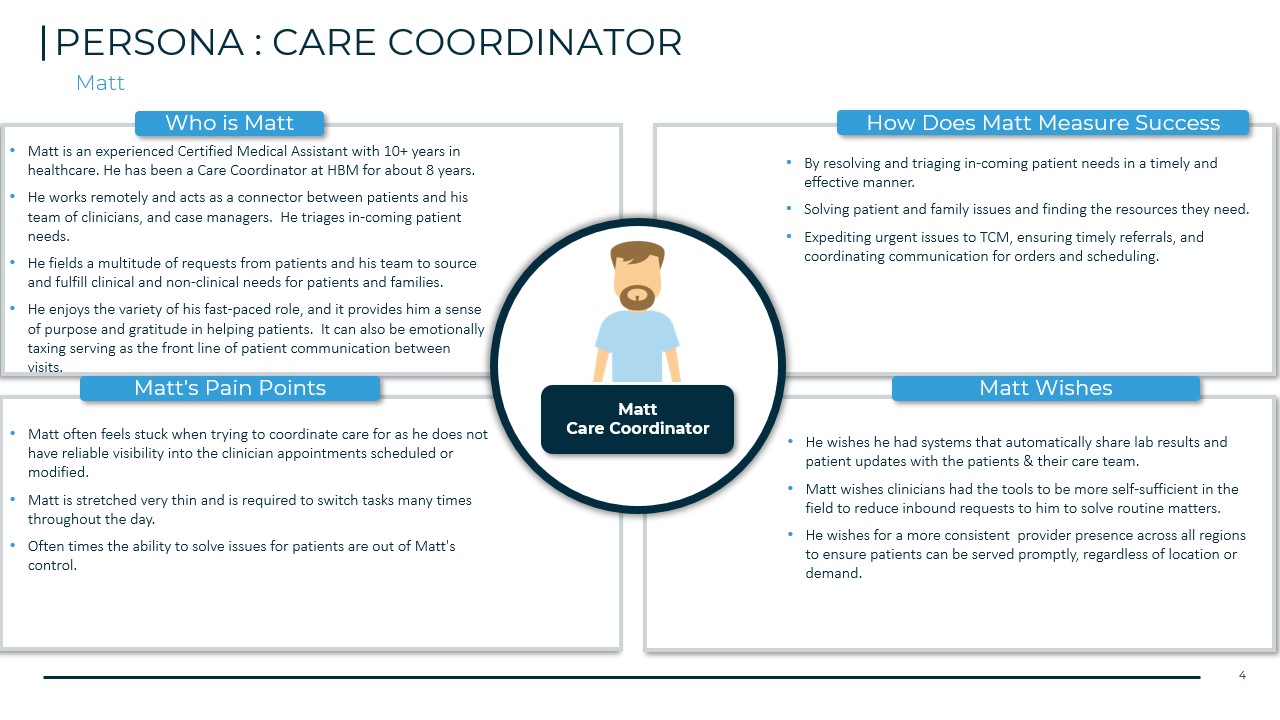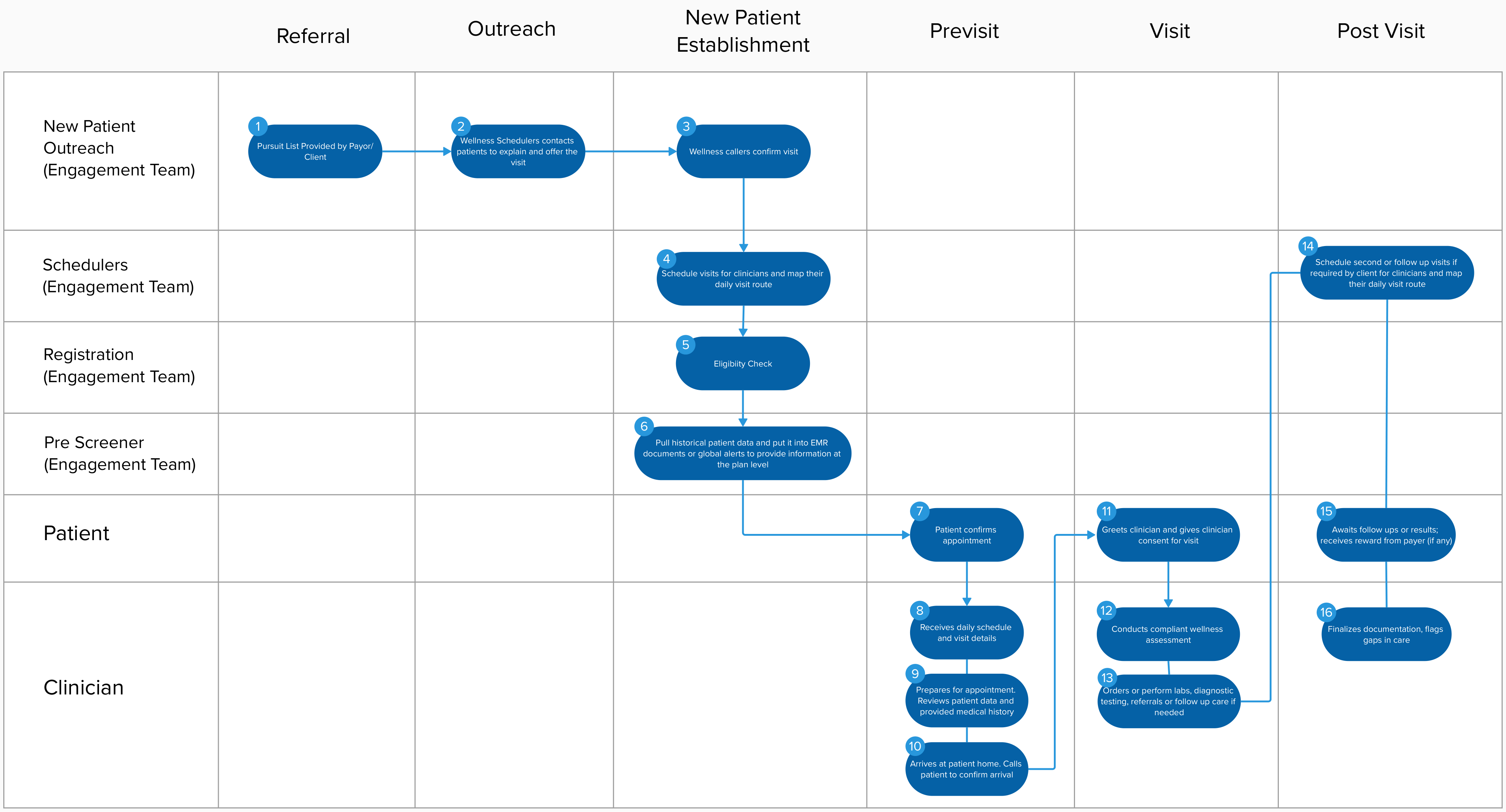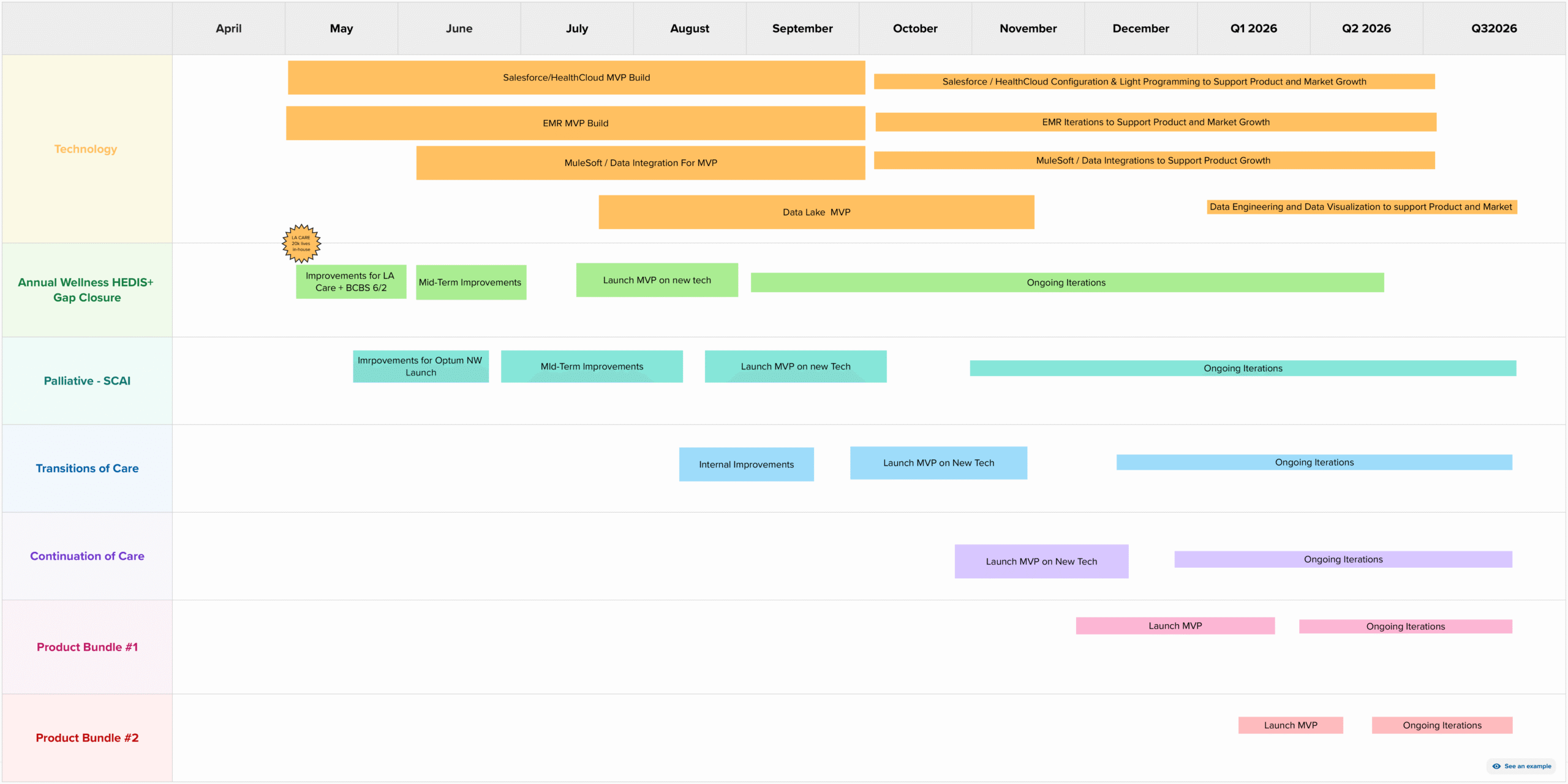Homebase Medical Experience Platform:
Elevating In-Home Care Through Clinician-Centered Design
Service design and product strategy
For Homebase Medical, enhancing care for homebound older adults meant more than upgrading technology—it required a reimagined digital ecosystem rooted in clinical empathy, operational clarity, and scalable care delivery. The Homebase Medical Experience Platform was envisioned as a unified, user-centered solution to support clinicians, care teams, and operational staff in delivering consistent, high-quality care at scale. Through thoughtful service design, integrated data strategy, and streamlined workflows, the platform empowers frontline users, reduces administrative burden, and enables deeper connection between patients, providers, and care partners—advancing Homebase Medical’s mission of helping patients live independently with dignity.






